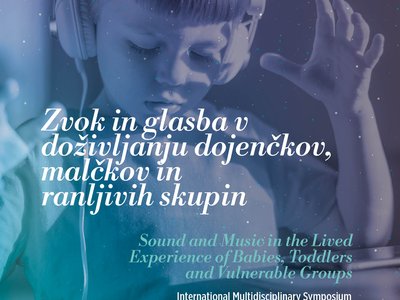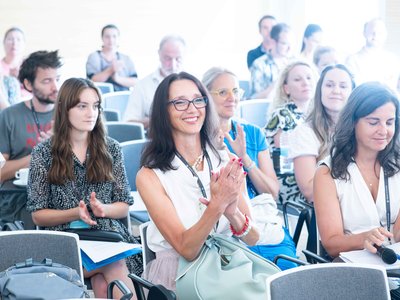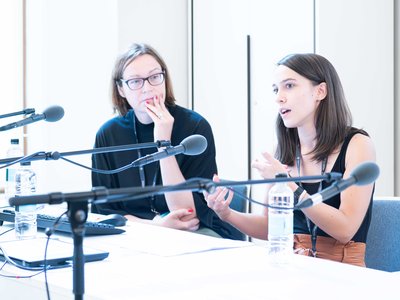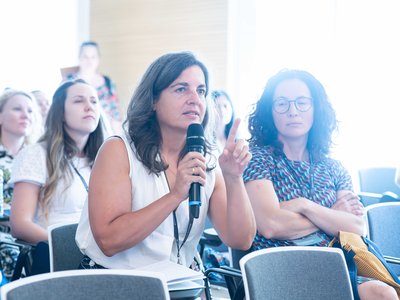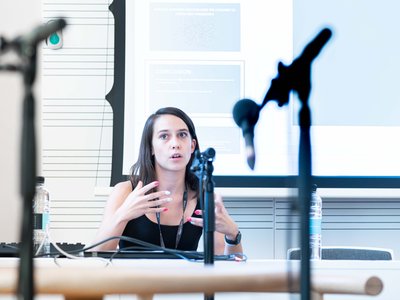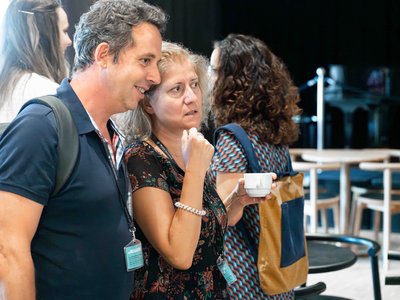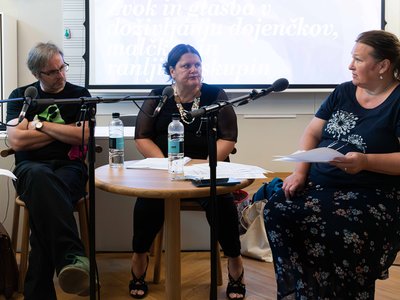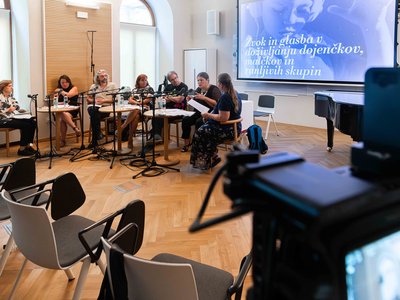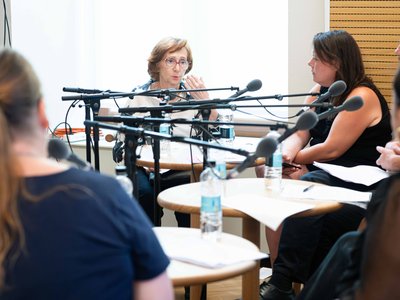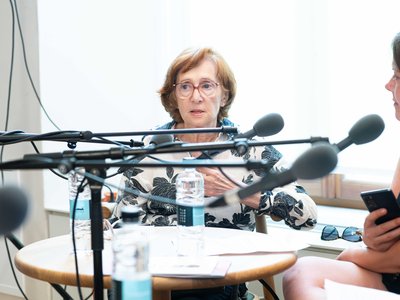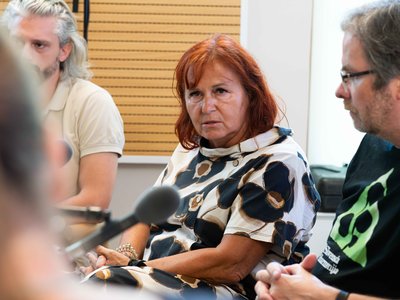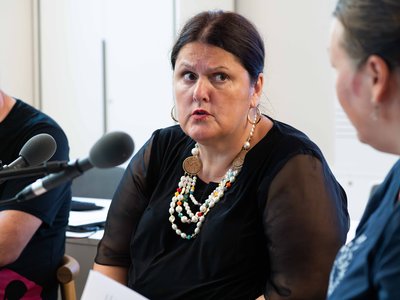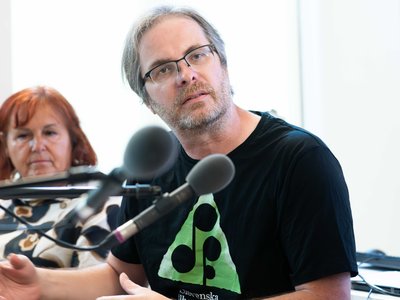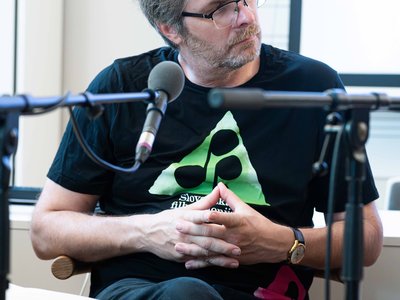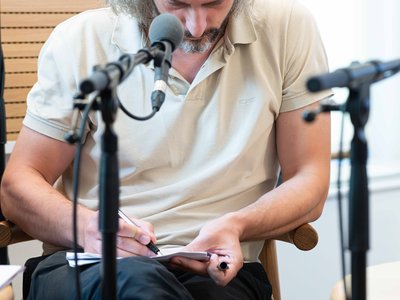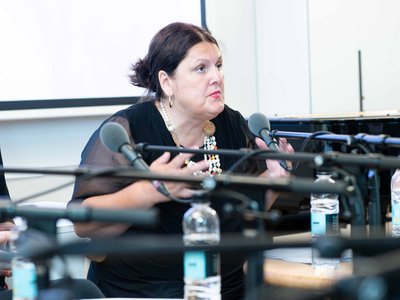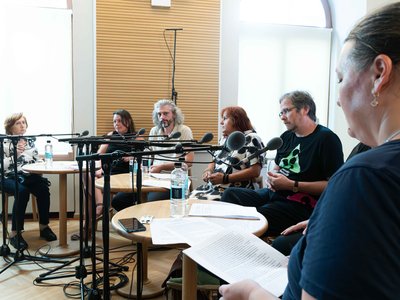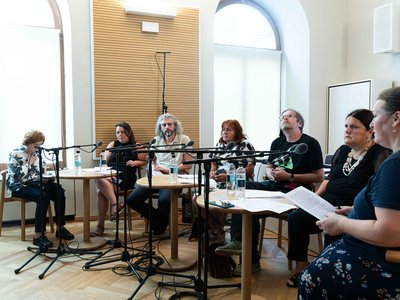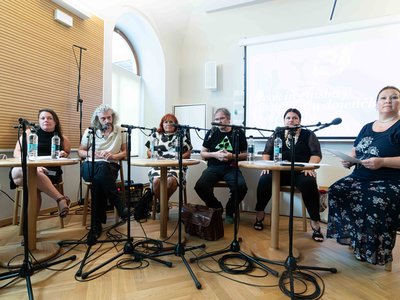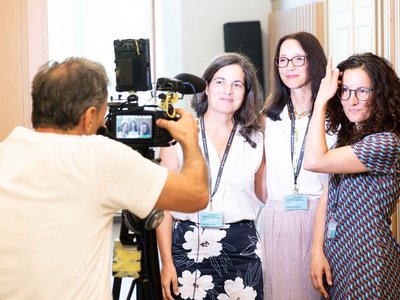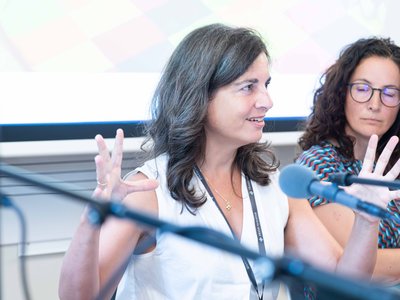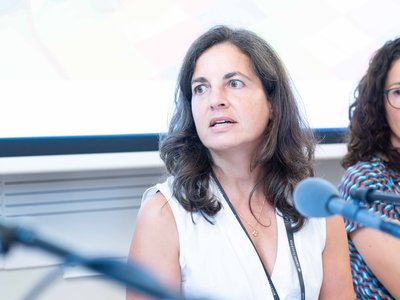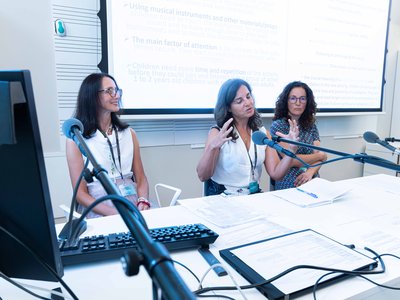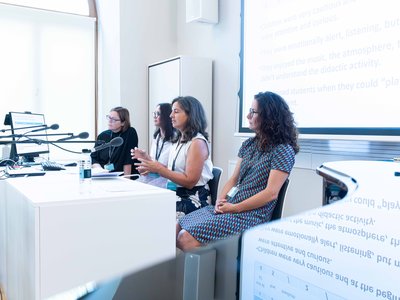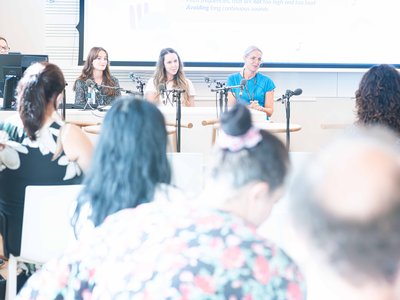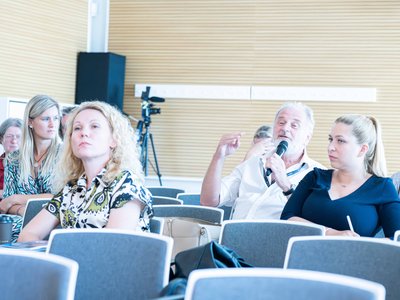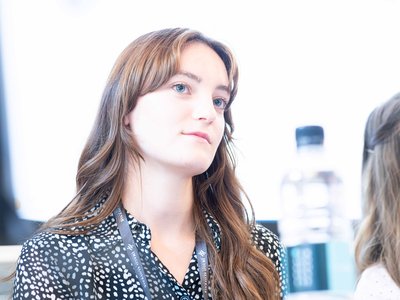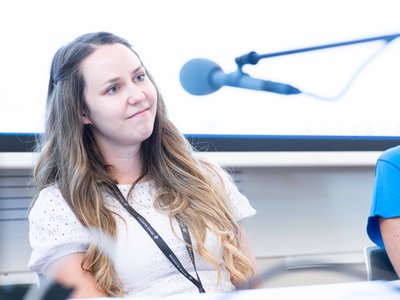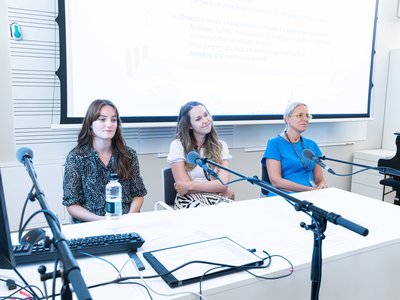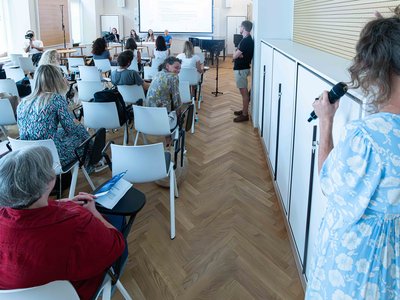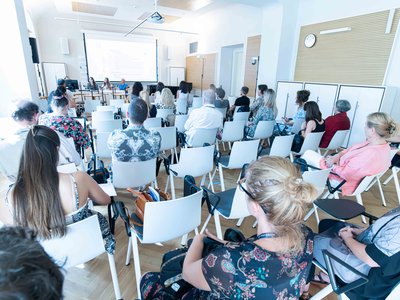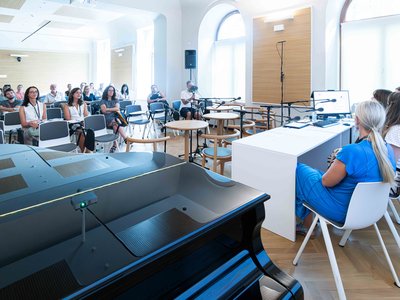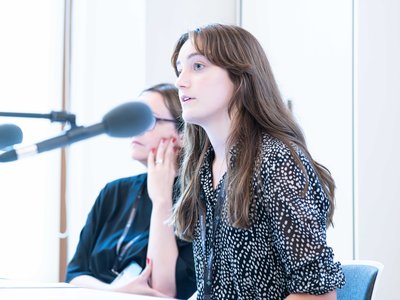On August 25th and 26th, an international multudisciplinary symposium took place at the Academy of Music of the University of Ljubljana. The symposium encompassed topics on sound and music in the lived experience of babies, toddlers and vulnerable Groups.
The symposium examines the role of sound and music in sensitive life periods and situations such as the earliest developmental stages or vulnerable situations (e.g., marginalised individuals and groups, senior citizens, those with various conditions, asylum-seekers). The discussion runs within a broad interdisciplinary framework among artists and renowned international experts in the fields of developmental psychology, neurophysiology, neuropsychology, psychoacoustics, music therapy, music pedagogy, anthropology. The discussion focuses on questions such as: How does music enter and cocreate the human experience from the earliest ages onwards? Why do we even create in the first place? How can we address largely overlooked audiences and encourage listeners and those involved in music – especially creators and performers of music, sound artists and producers – in the broadest sense? What dilemmas arise from the dichotomy between the desire to satisfy the aesthetic expectations of young listeners and the necessity for an ethical, profound and lasting relationship between artists and young audiences? How can an individual become a dialogic partner in hearing the inner world of another person? What are the concepts and experiences of medical ethnomusicology or applied ethnomusicology with regard to the role of music among children and underprivileged individuals and groups? What social or psychological effects are encouraged by including such people in musical activities?
Symposium brochure with programme and abstracts (in Slovene and English)
Contributions:
- Prosody links music and language development in infancy (Michael Kavšek, Katarina Kompan Erzar)
- »Staying With the Trouble«: On regulation by singing lullabies (Katarina Juvančič)
- Sound studies and deaf studies correlations (Dana Papachristou)
- Beyond hearing: deaf soundscapes of touch and vibration (Panayotis Panopoulos)
- Sympathy Radio for the vulnerabilities of listening (Evangelia Paxinou and Nicolas Rémy)
- Between kids’ words, an audio analysis (Jul Mcoisans)
- Sound mediation for babies, toddlers, and vulnerable groups: challenges and potentials of radiophonic art (Ana Čorić)
- Musical activities in the earliest period of life and their effects on social development (Sara Smrekar)
- Characteristics of creating music for babies and toddlers – composers’ perspective (Tara Maja Simonič, Maruša Laure and Katarina Habe)
- The radio play’s text for children as a starting point for creating musical activities in the earliest childhood (Katarina Zadnik, Petra Brdnik Juhart and Katarina Kompan Erzar)
- A case for a collaborative vocal improvisation pedagogy in health and care settings (Jaka Škapin)
- Forgotten music wisdom of the past and spontaneous sounds – the elixir of life (Mira Omerzel – Mirit)
- The salutogenetic birth space: silence, sounds and voices (Zalka Drglin)
- Tailoring methods for music involvement for children with autism spectrum disorder (Katarina Kurtjak and Manca Kok)
- Music for people with Parkinson’s disease: the patients’ perspective (Ana Kuder, Manca Kok, Saška Rakef and Igor M. Ravnik)
- Round Table – Music for All
Image credits:
Archive: Imago Sloveniae
Photo: Yeremie Pierre Noir

